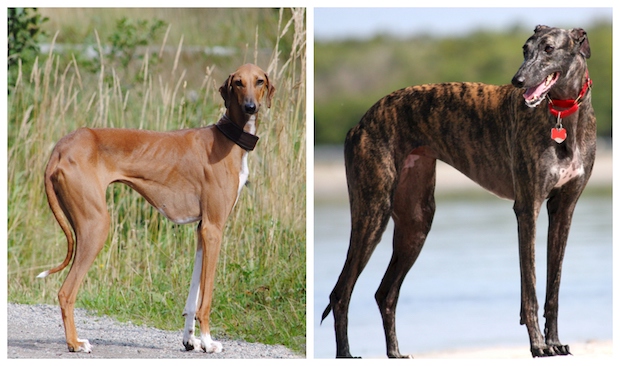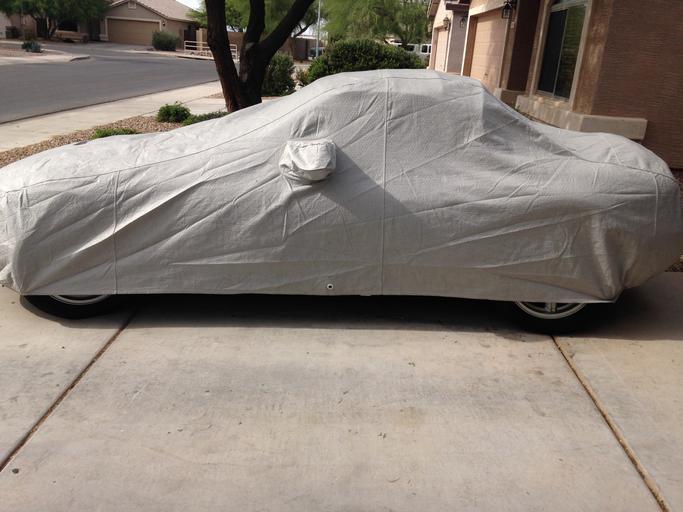
A photo of two exquisite breeds accompanies this post, and both of the breeds have a few things in common: The Azawakh at the left and the Greyhound opposite it are, of course, both sighthounds. Each is a very old breed that is very fast and very lean.
Their differences are many, but the one we want to mention in this brief post has to do with something you can see in the way that you can tell that the car under the dropcloth in this photo is a sports car and not a Jeep.

The coat of an Azawakh is very short, and his bone structure is easily seen through fine skin that fits tightly over his body. One can also see his musculature, and unlike the Greyhound’s musculature, the Azawakh’s muscles are “dry,” which means they lie quite flat unlike a Greyhound’s or Whippet’s.
“Dry” is a word that shows up a fair amount in canine terminology: Dry throat, dry skin, dry lips, dry flews, and dry forehead, to name a few. It also shows up in the standards of a few hound breeds: The head of an Ibizan Hound is “extremely dry fleshed,” as is the head of the Norwegian Elkhound which should be “strong and dry.” The Portuguese Podengo Pequeno’s neck is “very dry without dewlaps,” while a dry head and tight skin are faults in a Basset Hound.
The Azawakh, however, is the only hound breed with a standard in which “dry” refers to the muscles: “Underline – The chest is curved like a keel consisting of dry muscle and visible skeleton.”
That both dogs are muscular goes without saying, but we think you’ll agree that these two breeds “present” differently.
Photo of Azawakh by Bani-Bangou is licensed under CC BY-SA 4.0 and may be copied and redistributed in any medium orn format. Photo of covered car is from FreeImages.com which acquired from Flickr where it was marked as Public Domain or CC0 and free to use. Greyhound is by ginastancel via iStockphotos ID:147246432
